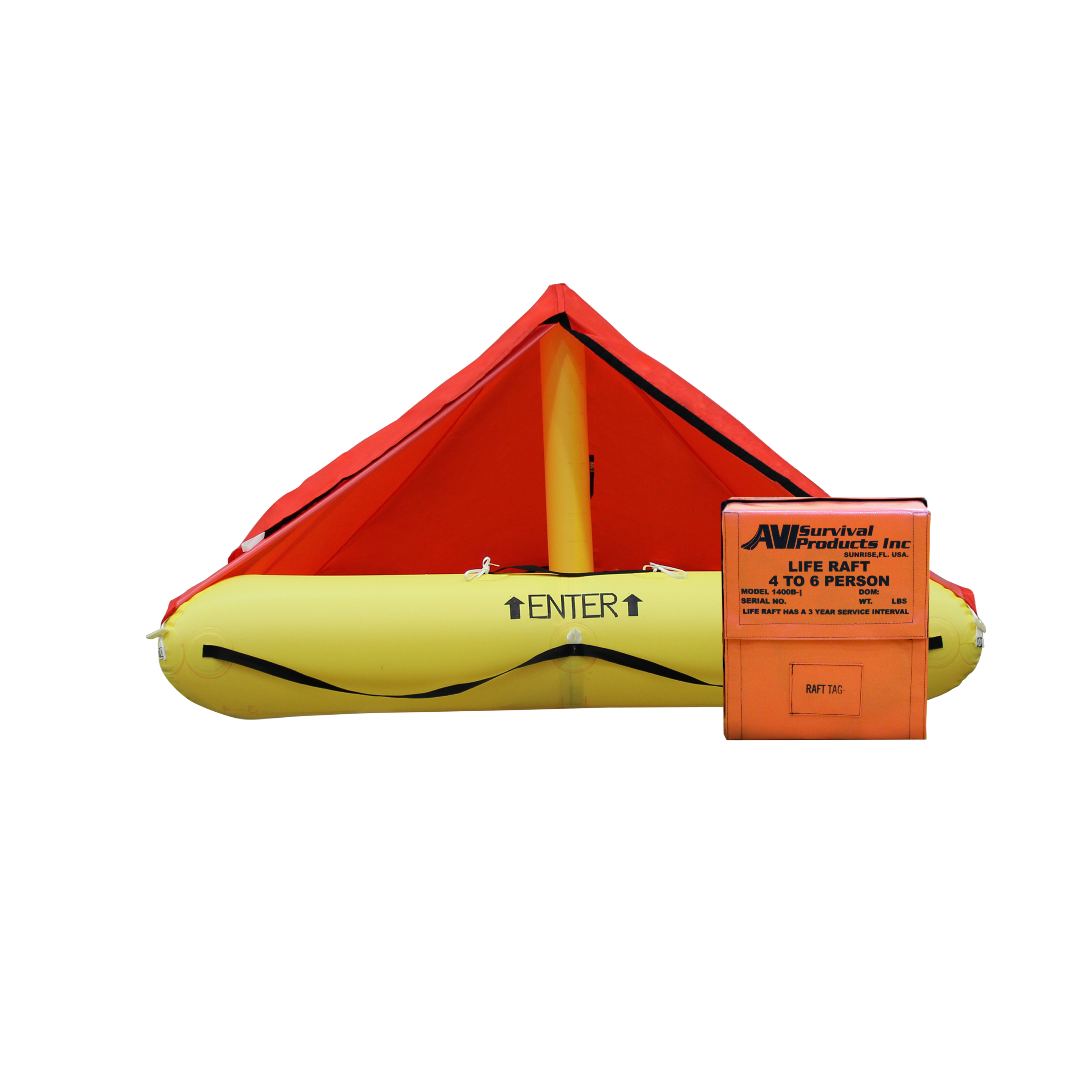

The second tube should support two-thirds of the raft's rated capacity when the largest buoyancy chamber is completely deflated. Double-tubed rafts found on all offshore and ocean-going rafts increase freeboard and reduce the likelihood of swamping. Short-term survival coastal rafts have one tube with two air chambers to prevent complete deflation in the event of a puncture.
Buoyancy Tubes Life rafts come with either one or two automatically inflating buoyancy tubes. It creates drag, prevents "riding", reduces the chances of capsizing, and turns the raft's hatch away from oncoming waves. The sea anchor is an integral part of the stability design. Bags with large holes for rapid filling also help keep the raft from blowing over before passengers can board. Toroidal-shaped and hemispheric ballast systems have proven most effective in preventing heavy-weather capsize. The filled pockets resist the lifting action of wind and waves, and the anchor adds drag to keep the raft edge down. Most flat-bottomed survival rafts use a combination of water-filled ballast pockets and a cone-shaped sea anchor on a long (60' or more) line to prevent capsizing. SOLAS standards require that approved rafts have a boarding platform, additional safety gear, and considerably more interior space than commercial-grade models. SOLAS standards are very strict, as they are with all SOLAS-approved gear. When purchasing a product that will be used to keep you alive in an emergency, it only makes sense to get one that meets that highest standards available for comparison. Ocean-going rafts are designed for long-term survival of at least 30 days, and are required equipment on most commercial vessels and by some international racing authorities.īelow is an outline of the basic features to consider, with notes from our tests. Offshore rafts extend survival time to four or five days by including supported canopies and two buoyancy tubes (the second tube acts as an emergency backup). Coastal rafts should only be considered if there is a high probability of rescue within a day, because they lack features needed for long-term survival, such as double inflation tubes. Platforms are designed to keep survivors out of the water while they await a quick rescue. There are three basic life raft designs: coastal, offshore, and ocean-going. Consider the features outlined below in making your decision. (Complete reprints of the article are available by contacting the BoatUS Safety Foundation.) To make a selection, assess your risks and your probability of rescue within a given time, based on the type of boating you do and the location-whether you're near shipping lanes or popular fishing spots near shore, or you're planning a cruise to some of the more isolated parts of the world. Excerpts of their findings, Foundation Findings Report #12, Survival Rafts, are reprinted here to help you choose which raft is right for you. The BoatUS Safety Foundation tested eight different life rafts in 1991, all of which performed as advertised.


 0 kommentar(er)
0 kommentar(er)
